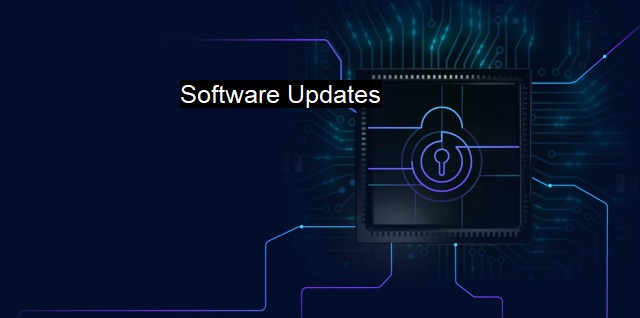What are Software Updates?
The Role of Software Updates in Cybersecurity and Antivirus Protection: Types, Significance, and Management
Software updates, from a cybersecurity perspective, refer to the practice of regularly distributing or installing files to upgrade a software application or system, which may include implementing new features, fixing glitches, and most importantly, patching up security vulnerabilities.In today's fast-evolving technological landscape, most software systems are complex structures encompassing vast lines of code, written by different developers, sometimes over several years. This complexity inevitably contributes to occasional flaws or vulnerabilities which, without the proper attention, may render such software systems to potential malicious attacks from hackers. These security-oriented vulnerabilities can vary in their potential damage, scale and type. From pilfering sensitive user data, initiating unauthorized activities, to making the systems become altogether inoperable. Therefore, to maintain a resilient posture against such threats, software updates are rolled out by vendors, intended to fortify the cybersecurity defences.
One crucial component of these software systems is antivirus software. This class of software specializes in detecting and neutralizing malware (short for malicious software), which intend to cause destruction or provide unauthorized access to the host system it infiltrates. To defeat such malicious entities, antivirus software keeps track of already documented malware through its virus definitions database.
In this ongoing battle between antivirus solutions and malware, black hat hackers are continuously engineering new threats and attack vectors. This often involves mutating their malware or using unknown vulnerabilities (zero-day exploits) to avoid malware identification systems – rendering the pre-recorded virus definitions ineffective for these new or altered malware. As a result, antivirus companies regularly release software updates consisting of the newest threats which have now been identified and neutralized, alongside improved methodologies to detect hiding infections. By enabling these updates, the antivirus software ensures that it can effectively secure against new and developing threats keeping the users' systems robust and well-guarded.
With the rise of sophisticated cyber-attacks like Advanced Persistent Threats (APTs) and ransomware, antivirus software updates are increasingly focusing on strengthening proactive discovery mechanisms of hitherto unrecognized vulnerabilities and unreported breaches. This is coupled with novel recovery features intended to restore the system from any damage caused by successful attacks.
Neglecting software updates from both system and antivirus softwares can inadvertently expose the software--and as a consequence, the entire system--to serious cybersecurity risks. This includes data breaches, identity thefts, and inherent system failures. Regardless of their nature, these implications often carry grave financial and reputational costs that only amplify over time.
Importantly, as a foundational component of cybersecurity practices, the application of timely software updates should be ingrained in every software use culture. This includes not only the individual users of personal computers and smart devices, but also larger enterprises that handle enormous data sets and sensitive information. Such establishments should critically employ dedicated IT security personnel or teams to handle these updates ensuring maximum system security.
Software updates, especially form a proactive defensive apparatus to remedy potential system vulnerabilities and fortify software applications. Considering the perpetually changing hacker methodologies and multiplying cyber threats, it is immensely crucial to stay current with these updates. Conscious, timely action against these Internet risks can both ward off potential information security breaches and ensure the secure and efficient operation of all digital platforms.

Software Updates FAQs
What is a software update and why is it important in cybersecurity and antivirus?
A software update is a new version or patch of software that is released specifically to fix bugs, provide new features, or address security vulnerabilities. In cybersecurity and antivirus, it is crucial to keep your software up-to-date to ensure that known vulnerabilities are addressed, and your system is protected against new threats.How can I tell if my software needs an update?
Most software programs will notify you when there is an update available. However, if you want to manually check for updates, you can usually find it in the software's settings or options. Some programs have an "Update" or "Check for Updates" button that you can click to check for any available updates.Is it safe to download software updates?
Yes, it is safe to download software updates from reputable sources. Ensure you are downloading updates from a trusted source or company. Avoid downloading updates from unofficial websites or links, as these may lead to malware or other cyber threats.What happens if I don't install software updates?
If you don't install software updates, your system may be exposed to cyber threats. Hackers often exploit known vulnerabilities in software programs to gain access to systems and steal personal data or use it for malicious purposes. By not installing software updates, you are leaving your system vulnerable to these attacks, which could have serious consequences.| | A | | | B | | | C | | | D | | | E | | | F | | | G | | | H | | | I | | | J | | | K | | | L | | | M | |
| | N | | | O | | | P | | | Q | | | R | | | S | | | T | | | U | | | V | | | W | | | X | | | Y | | | Z | |
| | 1 | | | 2 | | | 3 | | | 4 | | | 7 | | | 8 | | |||||||